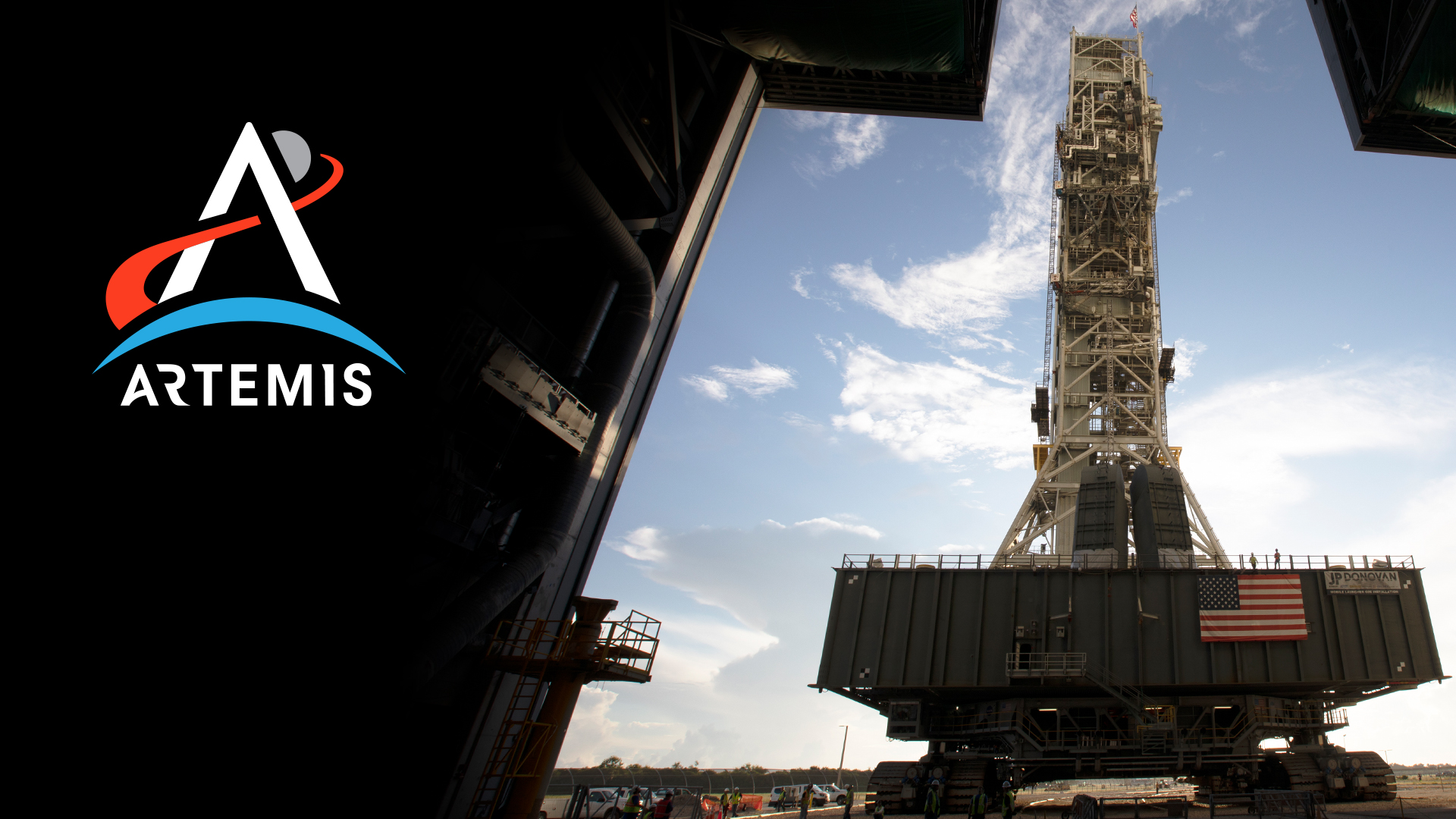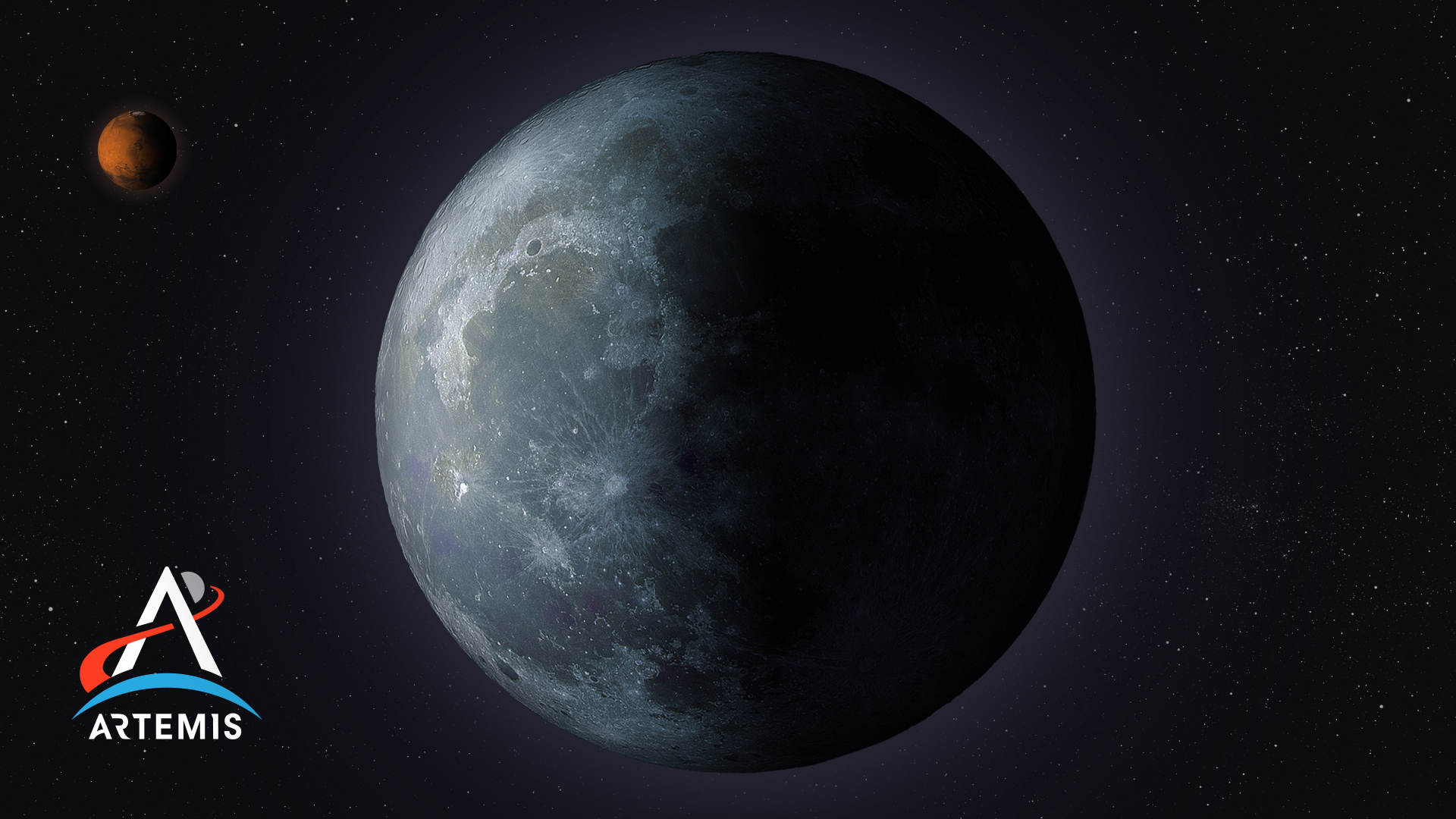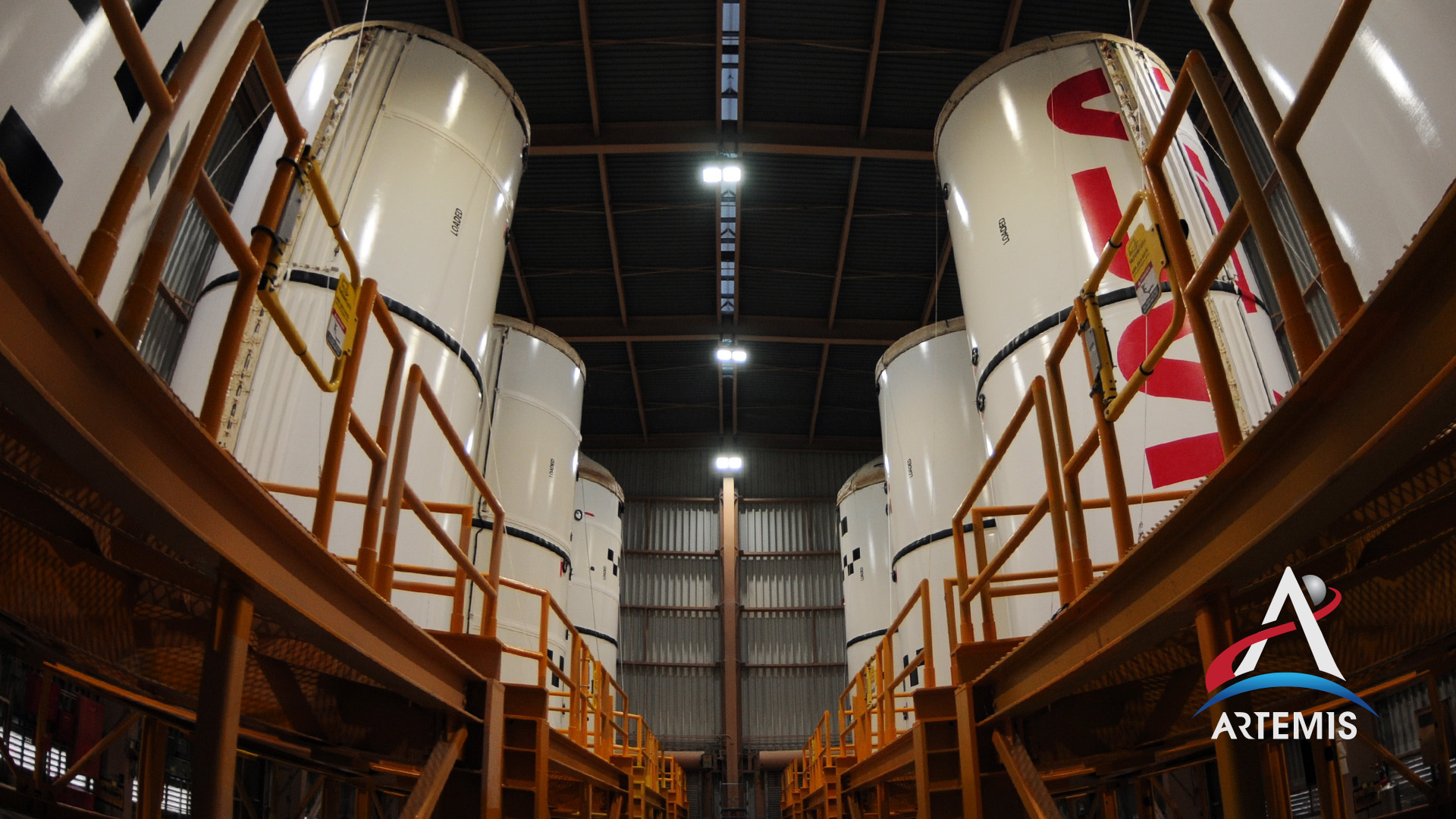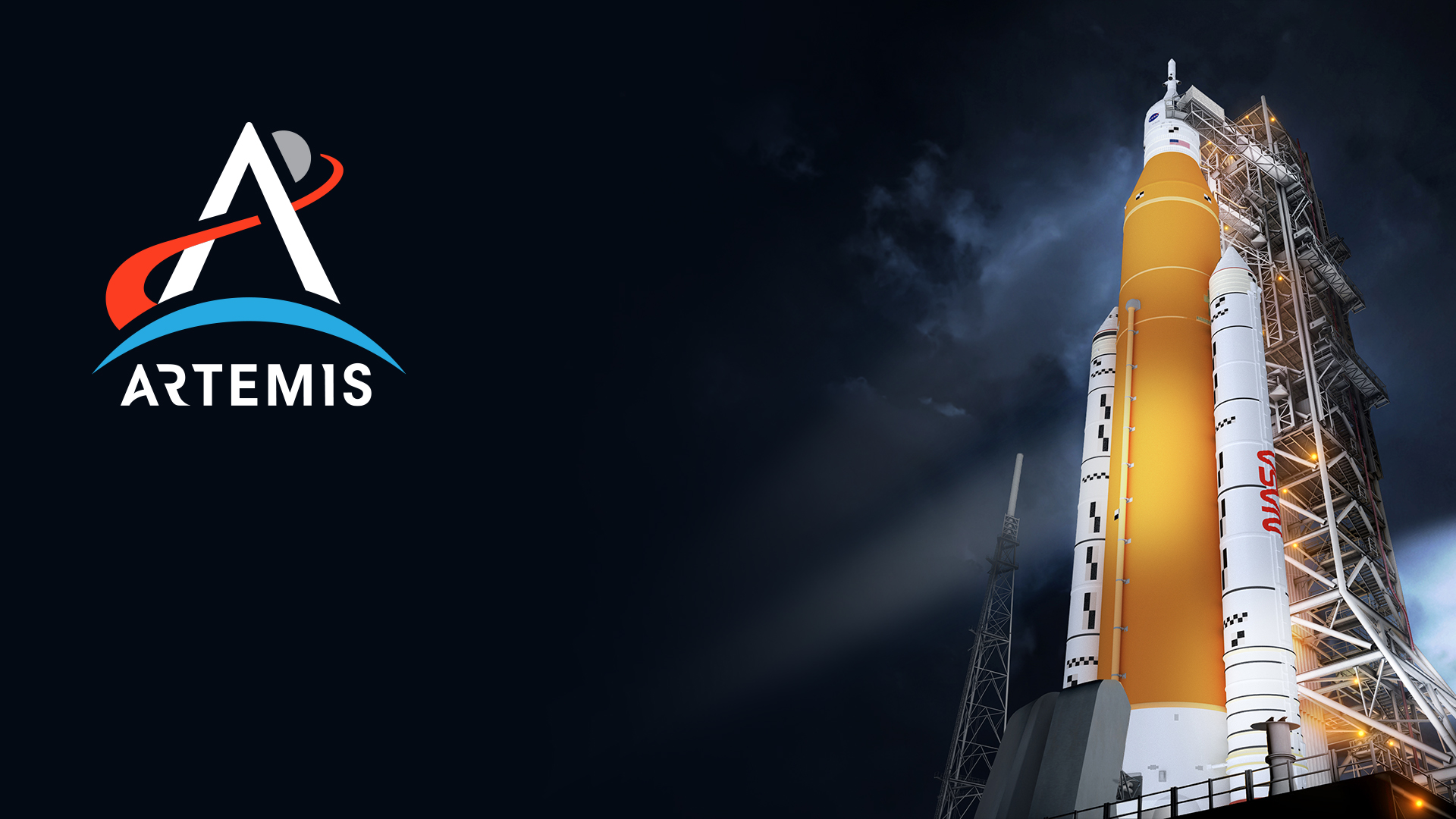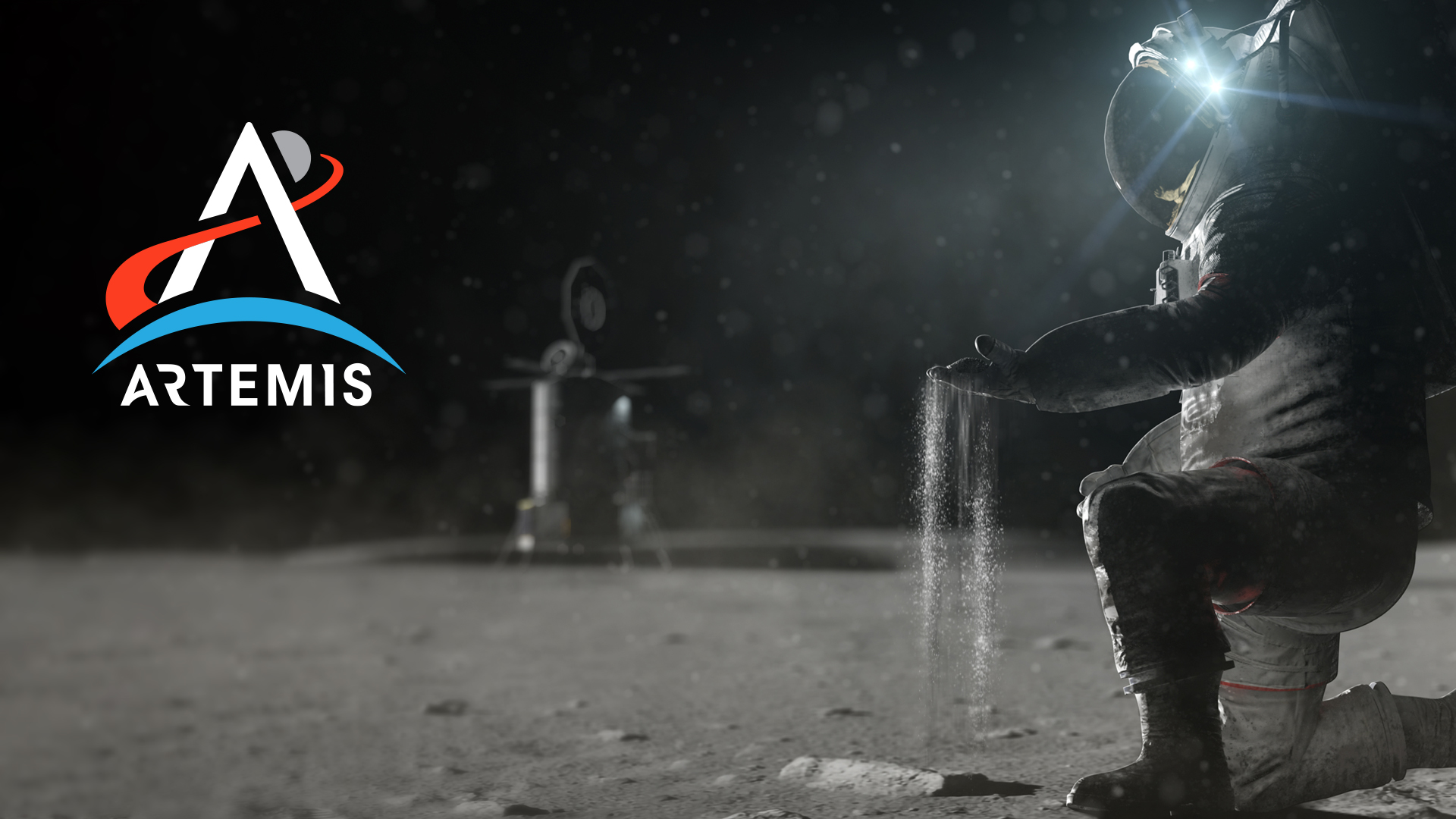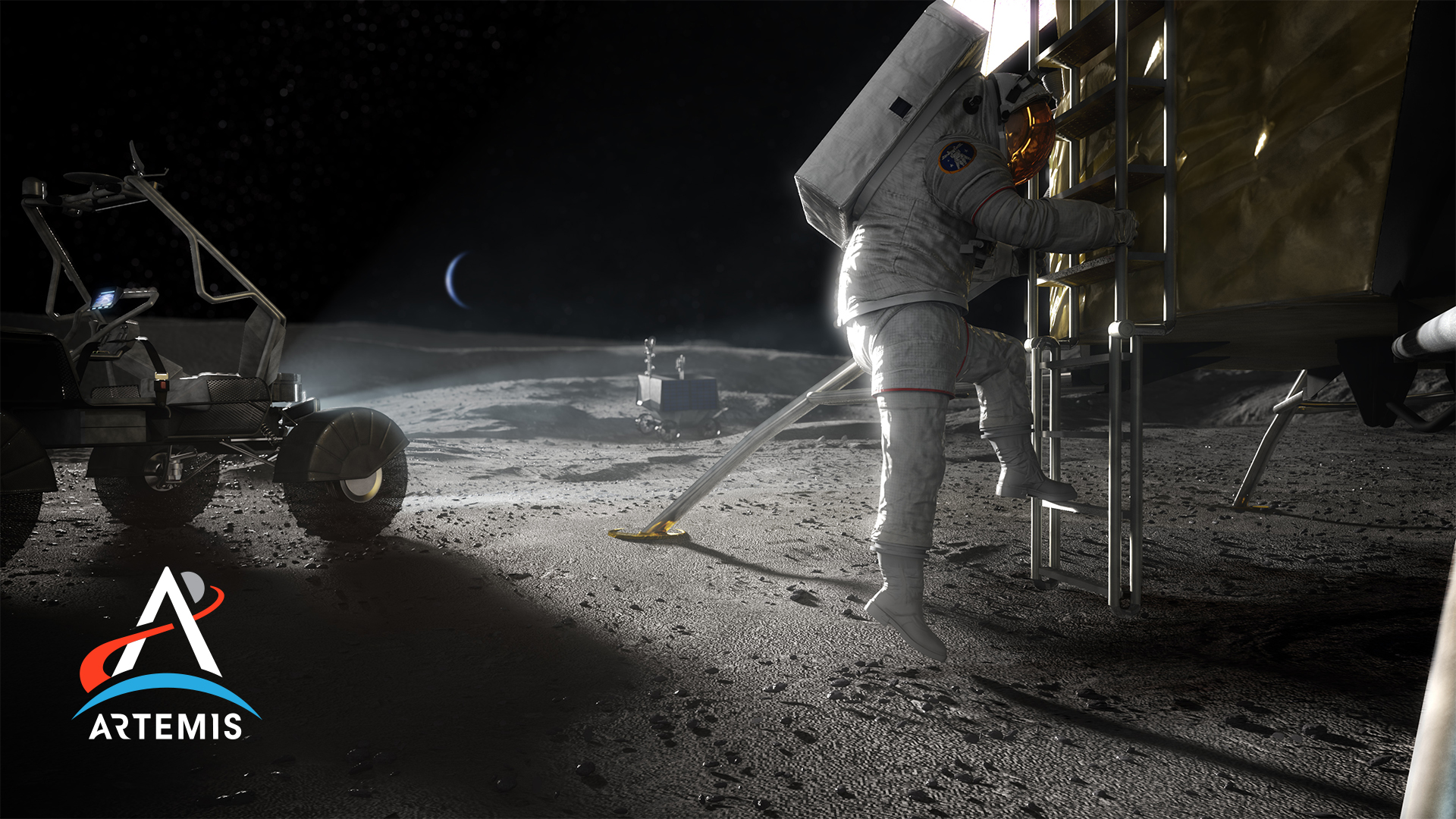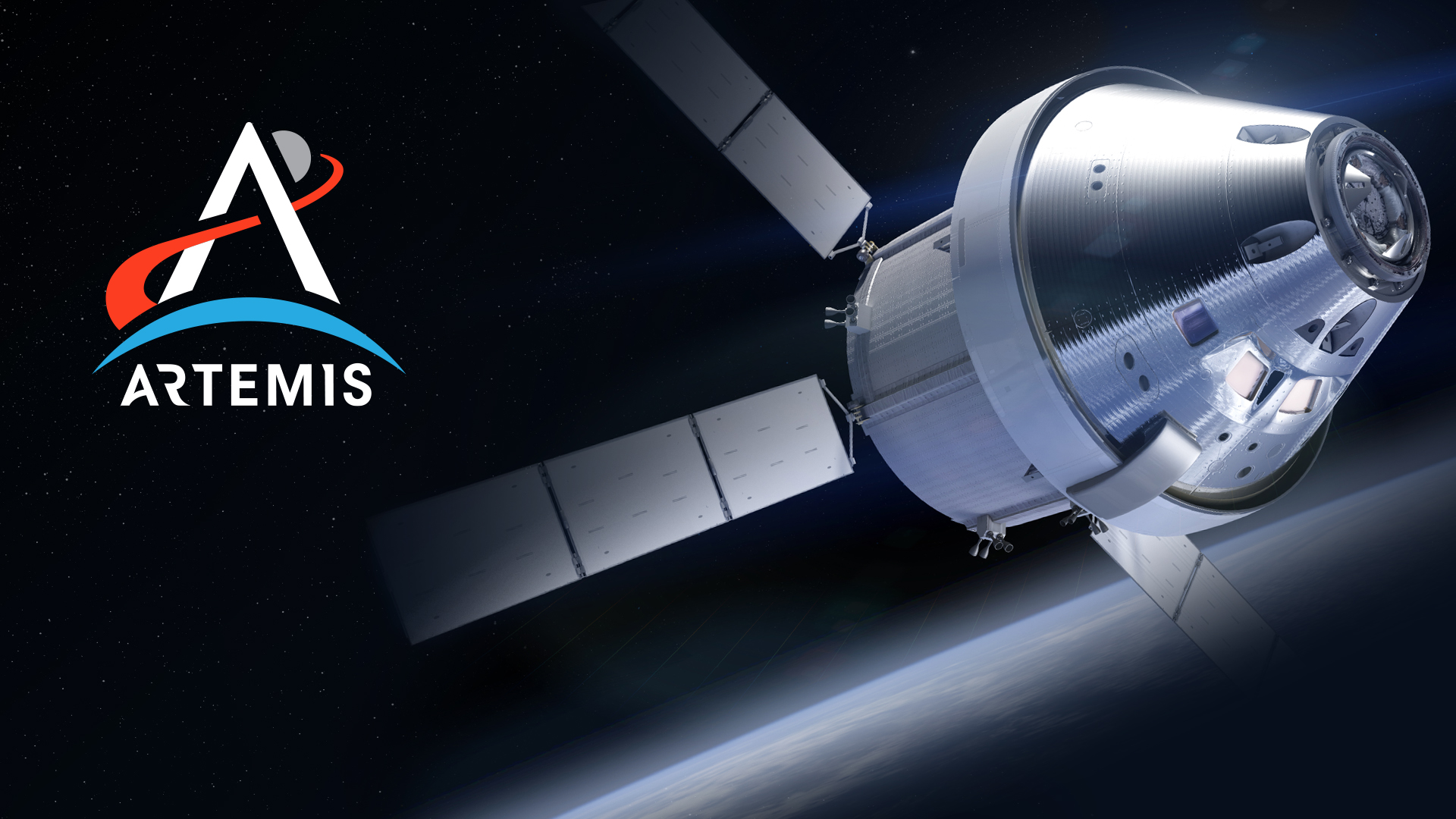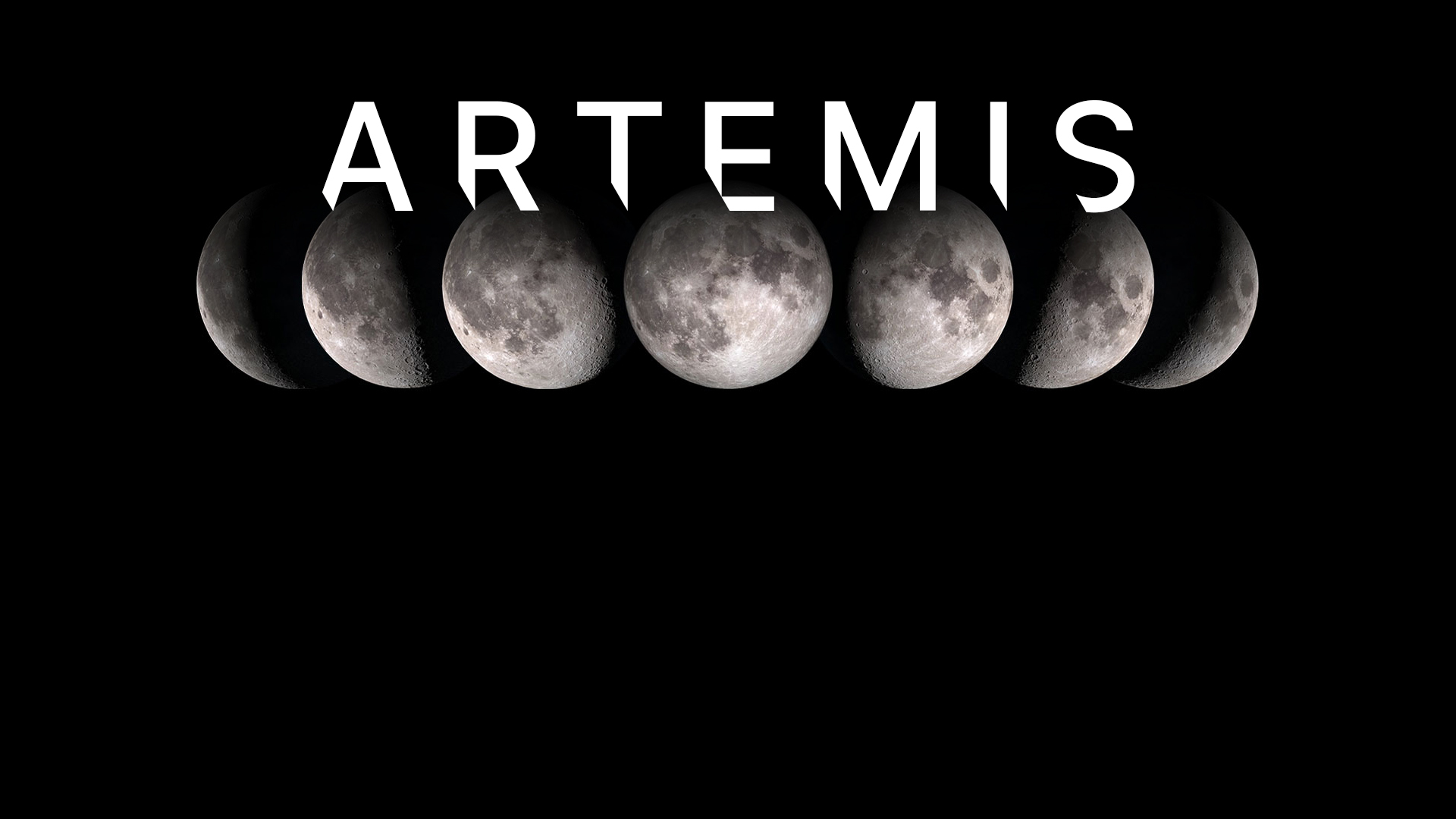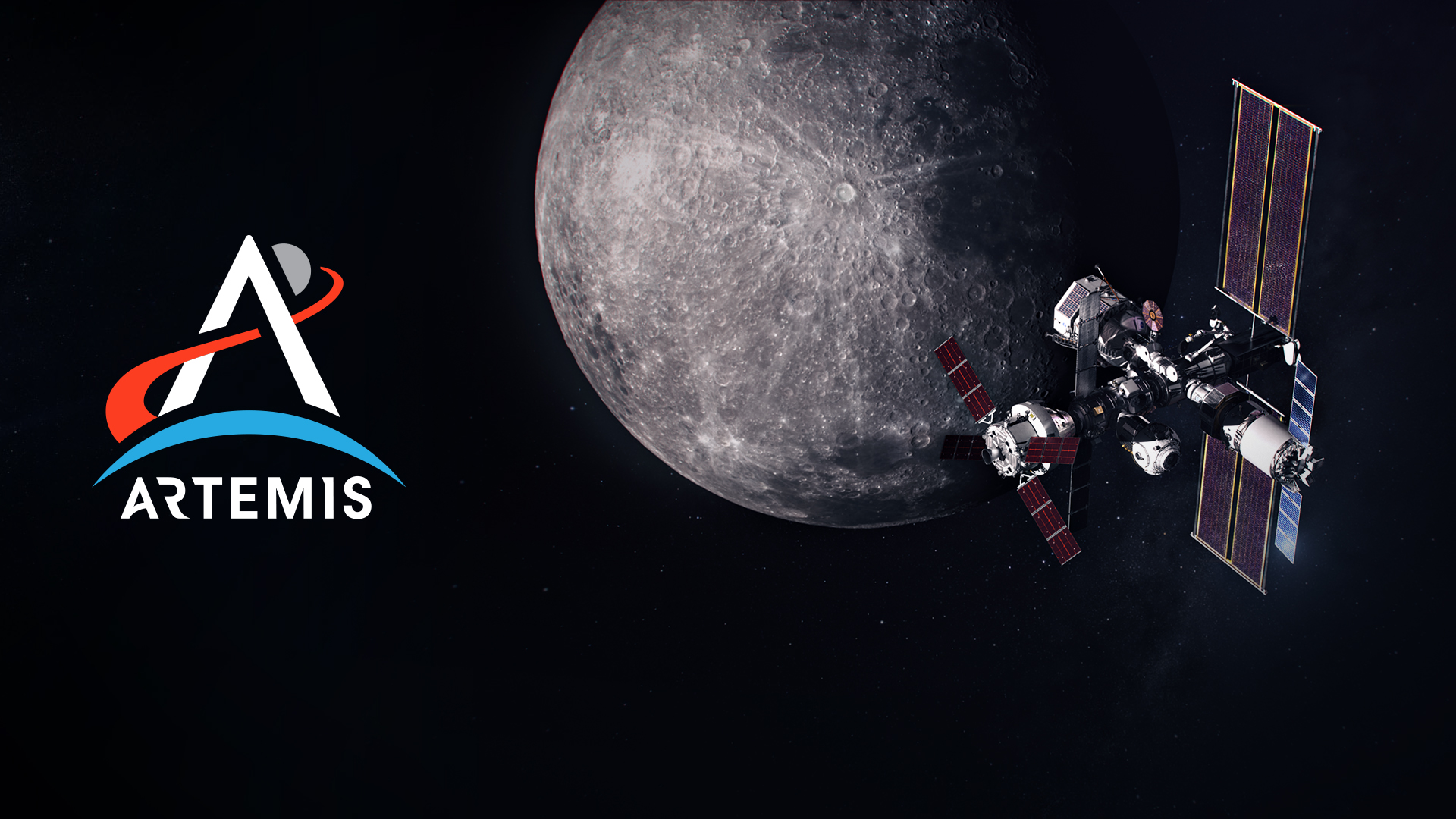In need of a revamp for your virtual meeting backgrounds? NASA has just unveiled a suite of Artemis-inspired imagery to help elevate your digital workspace.
From a ground shot of the most powerful rocket in the world, the Space Launch System (SLS) rocket, to an artist’s rendition of an Artemis astronaut about to take the first steps back on the Moon, these virtual backgrounds provide a glimpse into some of the most important pieces and milestones of the Artemis program.
Scroll through to download your next virtual background for work, school, or just for fun, and click the links to learn more about all things Artemis.
Virtual Backgrounds:
Crawler and Mobile Launcher
The mobile launcher, sitting atop crawler-transporter 2, is the ground structure that will be used to assemble, process, and launch the SLS rocket and Orion spacecraft from Kennedy Space Center for missions to deep space destinations.
Large Moon and Mars
An artist’s concept of the Moon and Mars. Through the Artemis program, NASA will land the first woman and the next man on the Moon. Using what we learn on and around the lunar surface, we will then set our sights on the next giant leap—sending astronauts to Mars.
Artemis Illustration
An illustration featuring key pieces to the Artemis program: the Moon, Earth, Mars, the Gateway, Orion, SLS, and of course, an astronaut!
SLS Boosters
The SLS booster is the largest, most powerful solid propellant booster ever built for flight. Standing 17 stories tall and burning approximately six tons of propellant every second, each booster generates more thrust than 14 four-engine jumbo commercial airliners.
SLS
SLS will be the most powerful rocket we’ve ever built. When completed, SLS will enable astronauts to begin their journey to explore destinations far into the solar system.
Astronaut Regolith
An artist’s concept of an Artemis crew member analyzing lunar regolith on the Moon. Space resources like regolith with play a key role in the Artemis program and future space exploration. The ability to extract and use extraterrestrial resources will ensure Artemis operations can be conducted safely and sustainably in support of establishing human lunar exploration.
Astronaut Step
An artist’s concept of an Artemis crew member stepping onto the lunar surface from the Human Landing System (HLS). Also pictured is the Volatiles Investigating Polar Exploration Rover (VIPER) (back) and the Lunar Terrain Vehicle (LTV) (left), two rovers that will be critical for making scientific discoveries on the lunar surface.
Orion
The Orion spacecraft will serve as the exploration vehicle that will carry crew to deep space, provide emergency abort capability, sustain the crew during space travel, and provide safe re-entry from deep space return velocities. Orion will launch on the SLS during the Artemis I mission.
Moon Phases
Central to all Artemis missions is the Moon. During Artemis I and II, NASA will launch SLS and Orion together on two flight tests around the Moon to check performance, life support, and communication capabilities. The Artemis III mission will be humanity’s return to the lunar surface—landing the first woman and next man on the Moon’s South Pole.
The Gateway
A full depication of the Gateway, an outpost orbiting the Moon and vital part of NASA’s Artemis Program. Built with commercial and international partners, the Gateway is critical to sustainable lunar exploration and will serve as a model for future missions to Mars.



























